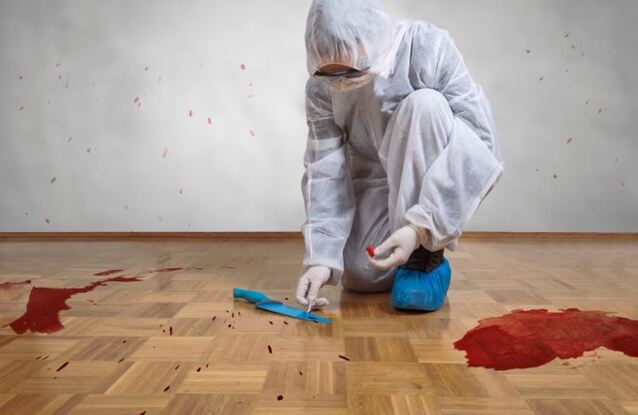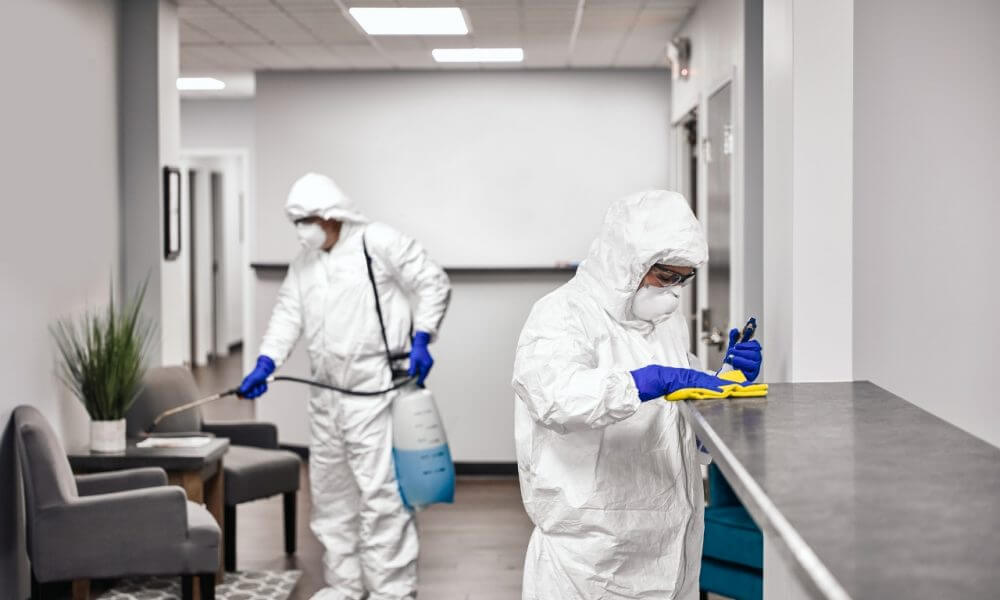Mold Remediation Services: Shielding Your Home from Mold And Mildew Damage
Specialist Biohazard Clean-up for Criminal Activity Scenes, Injury Incidents, and Infected Areas
In the realm of professional biohazard cleaning, thorough attention to detail and adherence to safety methods are extremely important. When confronted with the consequences of a criminal activity scene, injury incident, or any contaminated space, the value of proper clean-up can not be underrated. The intricacies and risks related to biohazards need specialized expertise and know-how to make sure effective remediation. As we explore the complexities of biohazard cleanup for these delicate environments, a deeper understanding of the obstacles and vital procedures included will arise, shedding light on the important function of expert cleaning services in recovering safety and comfort.

Value of Biohazard Cleanup
Biohazard cleanup adhering to crime scenes and trauma events is crucial for making certain the security of people and the setting. When these cases occur, they frequently leave a range of biohazards such as blood, bodily fluids, and other potentially infectious products. These materials can harbor hazardous pathogens like infections and germs, posing severe health risks if not effectively cleansed and disinfected.
Specialist biohazard cleanup solutions are trained to manage these hazardous products securely and successfully. They have the necessary tools, such as personal protective gear and specialized cleaning up representatives, to completely decontaminate the influenced locations. By entrusting the cleanup to skilled specialists, people can prevent exposure to hazardous virus and stop the spread of infectious diseases.
Additionally, appropriate biohazard cleanup is crucial for shielding the atmosphere. Incorrect disposal of biohazardous products can contaminate soil, water sources, and air, positioning a threat to wild animals and the environment. By following strict cleaning methods, experts can ensure that biohazards are securely eliminated and thrown away based on laws, minimizing the danger of ecological contamination.
Kinds Of Biohazards Encountered
Numerous dangerous products typically come across in criminal activity scenes and injury incidents present considerable wellness dangers if not handled effectively. Blood and bodily fluids are among one of the most common biohazards discovered in these circumstances. These liquids can carry virus such as HIV, hepatitis B and C, and various other dangerous microorganisms. Additionally, cells, body organs, and body components can also present serious health dangers as a result of potential contamination.
An additional kind of biohazard often run into is sharp items like needles, busted glass, and various other items that can cause injuries and transfer infections. Chemical risks are likewise a concern, as crime scenes might have compounds like tear gas, pepper spray, or medication manufacturing products that require specific handling and disposal procedures to stop additional harm.
In addition, mold and bacteria growth can take place in rooms where decay or extended exposure to moisture has actually taken place. These bacteria can release contaminants and irritants into the air, positioning respiratory risks to those revealed. Overall, biohazard cleaning professionals must be qualified and well-equipped to effectively handle these numerous types of harmful materials to guarantee the security of themselves and others.
Devices and Safety Equipment
When resolving the essential task of managing biohazards run into in criminal offense scenes and injury incidents, the application of correct devices and safety gear is paramount to making certain the safety and security of individuals included in the clean-up process. Specialized cleansing devices like biohazard bags, disinfectants, and sharps containers are essential for the risk-free collection and disposal of contaminated products. Making sure that all devices is appropriately preserved, regularly evaluated, and utilized according to security standards is crucial in minimizing the danger of exposure to biohazards during clean-up procedures.
Cleanup Refine and Techniques
Complete and efficient cleaning of biohazardous products from crime scenes and trauma incidents calls for thorough interest to information and adherence to rigorous security protocols. The cleanup procedure usually includes a number of vital steps.
Complying with the elimination of biohazardous products, the affected area goes through a comprehensive cleaning and disinfection process. This action involves using specialized cleaning up representatives and devices to make weblink certain that all traces of contamination are eliminated. After cleaning, the location is subjected to extensive testing to validate that it is risk-free and free of any type of continuing to be biohazards.

Decontamination and Disposal Procedures
To guarantee comprehensive purification and appropriate disposal of biohazardous products, following the thorough cleanup procedure, specific procedures have to be thoroughly adhered to with stringent adherence to security methods. Purification involves the removal or neutralization of contaminants to decrease the danger of direct exposure and spread of hazardous materials. This process normally consists of cleaning, decontaminating, and sterilizing the damaged location using specific equipment and EPA-approved chemicals.
As soon as purification is finished, proper disposal of biohazardous products is critical to avoid additional contamination or harm. Biohazardous waste, such as blood-soaked products or physical fluids, must be meticulously gathered, packaged, and visit their website identified according to regulative standards. ATP testing. These materials are then transferred to licensed centers for disposal via appropriate networks, guaranteeing compliance with local, state, and government guidelines
Final Thought
In conclusion, specialist biohazard cleanup is important for guaranteeing the reliable and safe removal of dangerous materials from criminal activity scenes, injury events, and contaminated spaces. By using specific tools, protective equipment, and complying with appropriate cleanup procedures and techniques, biohazard cleanup teams can properly get rid of and decontaminate of biohazards, lessening the risk of exposure and damage to individuals and the atmosphere.
As we delve right into the complexities of biohazard cleanup for these delicate environments, a deeper understanding of the difficulties and important procedures involved will arise, losing light on the indispensable function of specialist clean-up solutions in recovering safety and security and tranquility of mind.
Specialist biohazard cleaning solutions are educated to manage these dangerous materials securely and effectively. By following rigorous cleaning protocols, specialists can guarantee that biohazards are securely eliminated and disposed of in accordance with policies, reducing the threat of ecological contamination.
In general, biohazard cleanup professionals have to be qualified and fully website here equipped to successfully take care of these different kinds of unsafe materials to make certain the safety and security of themselves and others.
When addressing the critical job of dealing with biohazards experienced in criminal activity scenes and injury cases, the usage of correct tools and safety gear is extremely important to guaranteeing the security of people included in the cleaning process.